Keywords
|
| Alarm Generation, Color Space Transformation, Component-based method, Eye Detection, Edge Detection, Face Detection, Skin Color Segmentation, Threshold based Segmentation |
INTRODUCTION
|
| Human face detection is the first step of any face processing systems, computer vision and computational image analysis. The last decade has shown dramatic progress in this area, with emphasis on such applications as human computer interaction, biometric analysis, content- based coding of images and videos, content-based image retrieval systems, robotics vision and surveillance systems. Most face recognition algorithms assume that the face location is known. However, in reality, most images are complicated and may contain extraneous visual information or multiple faces. Given an image, the goal of a face detection algorithm[6] is to identify the location and scale of all the faces in the image. However, detecting faces from a single image is a challenging task because of variations in scale, location, orientation, and pose. Facial expression, occlusion like wearing sunglasses or wearing or growing a mustache and beard, and lighting conditions also significantly deform appearance of the face. In general, face detection approaches can be classified into four categories[7]. They are knowledge-based, feature invariant, template matching, and appearance-based methods. |
| Recently, component-based approaches have produced better results than global approaches, since individual components vary little while the variations related to pose changes are mainly geometric [10]. Component detectors can accurately locate facial components, and component-based approaches can be used to construct detectors that can handle partial occlusions. The majority of the previously proposed component-based methods used gray level values to detect faces in spite of the fact that most images today are color. As a consequence, most of these methods are computationally expensive and some of them can only deal with frontal faces with little variations in size and orientation. To solve these problems, a color-based approach has been studied. It segments skin-like regions and then detects or verifies the presence of facial areas in these regions. However, it is computationally expensive due to its complicated segmentation algorithm and time-consuming wavelet packet analysis. In color images, [6] proposed a component-based face detection algorithm [4] that constructs eye, to verify candidate faces. The facial components were detected using feature maps derived from models based on skin color, and were combined based on the geometries and orientations of the detected components. Novel component-based face detection for nearly frontal face images is proposed. This approach is constructed by combination of knowledge-based and feature invariant methods. Color feature is able to handle a wide range of variations in static color images. Here skin color is modeled using a parametric elimination in three components of transformed color spaces that are strong to separate the skin tones from non-skin pixels. Eye detection is a pre-requisite in eye-gaze tracking and it uses an algorithm for detection of eyes in face images. This system is capable of detecting the movement of the eye and its direction. This information can then be used as data for human-vision behavioral study or integrated as a part a human-computer interaction system for people with disabilities. The research into vision sparked more interest than any other types of human-computer interaction as the movement of eye can imply a lot of information. The movement of the eye can be used as a way to express feelings and as a way to communicate for disabled people. |
| The techniques of detecting the eyes in an image can be categorized as intrusive and non-intrusive [5]. Intrusive methods require the subject to wear certain devices like special contact lens or electro-oculography that enable the tracking of the eye-gaze. Non-Intrusive methods, on the other hand, enable the subject to be freed from wearing any kind of devices. Non-intrusive methods include red-eye effect, feature detection and neural network. There are two purposes of eye detection. One is to detect the existence of eyes, and another is to accurately locate eye positions. Under most situations, the eye position is measured with the pupil center. |
| Current eye detection methods can be divided into two categories. active and passive eye detection. The active detection methods [8] use special types of illumination. Under IR illumination [12], pupils show physical properties which can be utilized to localize eyes. The advantages of active eye detection methods are that they are very accurate and robust. The disadvantages are that they need special lighting sources and have more false detections with an outdoor environment, where the outdoor illumination impacts the IR illumination [12]. Passive methods directly detect eyes from images within visual spectrum and normal illumination. |
LITERATURE SURVEY
|
| Yuchi Huang et al., 2011- presented the component based deformable model for generalized face alignment, in which a novel bistage statistical model is discussed. It is used to account for both local and global shape character. This said about robustness and accuracy .which is not only on the images with exaggerated expressions. |
| Coetzer R.C 2011 et al., discussed about the eye detection for a real time vehicle driver fatigue monitoring system solution to prevent or reduce the fatigue related accidents. To ensure the driver’s rest, it having SVM training used on data set of a few thousand sub images. |
| Hyun-chul do 2007 et al., proposed about skin color detection through estimation and conversion of illuminated color under the various illumination. In this method it enables robust detection and conversion. This state the enhance ment of skin color detection using a static model, the color of an estimated illuminant from images captured under various illumination conditions is converted to that of a canonical illuminant. The illuminant color is estimated from the pixels in the sclera region of the eyes, and then converted to a canonical color for robust skin color detections.kin color is detected in the converted image using a decision boundary in HSV color space. |
| J Hyun Yang et al., 2009 proposed the detection of driver fatigue caused by sleep depriviation. This revealed the characteristics of drowsy driving through simulator based human in loop experiments. Using BN paradigm, we find good drowsiness effect by inferring driver alertness. |
| Cuixu, 2008 et al., proposed reliable method of eye status detection in real time for drowsy driving monitoring system. An ada boost based cascaded classifier is then trained to select the significant features from the large features sets and classify the eye states as open or closed. According to the states of the eye, the PERCLOS score is measured in real time to decide whether the driver is at drowsy state or not. Experimental results demonstrate that our eye states detection algorithm can give an average eye states detection rate 98% under different illuminations. Initially, the LBP histograms of eye regions are extracted as feature sets and secondly cascaded classifier based on ada boost learning is trained to classify the eye states. Experiments on a large number of samples have demonstrated the effectiveness of this method and revealed that it can be well applied in drowsy driving monitoring system. |
FACE DETECTION ALGORITHM
|
| The procedure of component-based algorithm for face detection is shown in Figure 1. |
| The algorithm [4] includes Localizing face candidates by using skin color segmentation. At first, the RGB color space is transformed in the YCbCr. The skin tone pixels are extracted using a skin color model constructed of transformed colour components. The detected skin tone pixels are iteratively segmented into connected components by using skin colour variance. After applying a combination of morphological operations, face candidates are grouped. By applying just skin colour segmentation, the algorithm will have a big false alarm rate. To minimize this undesired factor extract the most important face components. |
SPACE TRANSFORMATION
|
| The RGB color space is the most common color space, but R, G and B are dependent on illumination conditions. For this reason skin detection with RGB color space can be unsuccessful when the illumination conditions change. YCbCr color model belongs to the family of television transmission color models, where Y is the luminance component and Cb and Cr are related to the blue and red chrominance components, respectively. The following nonlinear conversion is used to segment the RGB image into Y, Cb and Cr components [1] [4] [5]: |
 |
SKIN COLOR SEGMENTATION
|
| Skin detection is an important first step in many intelligent systems such as face detection and recognition, face and hand tracking and other many recognition systems. In order to carry out skin detection, various skin color detection models such as skin color region, statistical diagram model and Gaussian model. Figure 3 shows the Y, Cb, Cr and Cb & Cr images.The basis of skin region model is that human skin color can be clustered in a limited region. In RGB space, the skin color region is not well distinguished in all 3 channels. |
| A simple observation of its histogram shows that it is uniformly spread across a large spectrum of values. For this reason, in this paper the skin color images are analyzed in the YCbCr color spaces. Figure 4 shows the histogram of Y, Cb, and Cr in order for a sample skin region. Cb, Cr components are able to separate skin and non-skin pixels. In this paper, skin color pixels are extracted by using these three components from YCbCr color spaces. Then morphological filtering is employed in order to remove existence noise and mask the skin color. Skin color segmentation [4][5] omits non-skin regions from the images, so next processes are just performed on these regions including uncovered parts of the body and probably other skin-like regions. This segmentation leads to an effective computationally reduction. |
| Procedure of skin color detection method on selected image is shown in Figure 5. They has been chosen because of complex background, make up, large amount of uncovered skin region. So there are challenges for detecting the face accurately. |
EYE DETECTION
|
| For eye detection the coordinates of the face area in the image are obtained. The face area coordinates are crucial in narrowing down the region of interest and can be obtained by finding the maximum and minimum of the x-axis and yaxis coordinates [4] [5] based on the final mask. The maximum and minimum coordinates of the face are obtained by searching for the white pixel in the face mask, and record down the maximum and minimum detected x-y values.Figure 6 shows a box drawn onto the image based on which the coordinates are obtained. Based on the coordinate of the given face region, the eye region can be estimated using some simple calculations. In this estimation, it is assume that the head of the subject is not moving or tilting to any side. With reference to Figure 7 the eye region is located approximately in the second quarter region of the face. The eye region is estimated by using the following formulas[5]. |
 |
 |
 |
| Figure 8 shows the result of cropping the eye region from the original image frame. The size of the region of interest (ROI) of the eye can be further reduced to remove unwanted face features such as eyebrow and hair. A mask of the eye region based on the algorithm used for the face mask can be used. MATLAB functions were used to remove unwanted objects connected to the border of the image and in the eye region. The exact eye region can identify by Traversing method from center to left for left eye and center to right for right eye. After detecting the eye from an image, it can be cropped using Threshold based Segmentation. |
THERSHOLD BASED SEGMENTATION
|
| In this first the eye database system is taken as the input of the proposed system for segmenting eyes into the right and left eye. In this segmentation process the threshold based segmentation algorithm is used. Thresholding is the simplest method of image segmentation [2]. From a greyscale image, thresholding can be used to create binary images.Figure9 shows the Cropping of left and right eye of original image |
EDGE DETECTION
|
| The edge detection algorithm is used to find the open or closed eyes from the segmented eyes. Edge detection is a fundamental tool in image processing, machine vision and computer vision, particularly in the areas of feature detection and feature extraction, which aim at identifying points in a digital image at which the image brightness changes sharply or, more formally, has discontinuities. The same problem of finding discontinuities in 1D signal is known as step detection. The purpose of detecting sharp changes in image brightness is to capture important events and changes in properties of the world. It can be shown that under rather general assumptions for an image formation model, discontinuities in image brightness are likely to correspond to 1) Discontinuities in depth,2) Discontinuities in surface orientation,3) Changes in material properties and 4) Variations in scene illumination. In the ideal case, the result of applying an edge detector to an image may lead to a set of connected curves that indicate the boundaries of objects, the boundaries of surface markings as well as curves that correspond to discontinuities in surface orientation. Figure 10 shows the result of detecting edge of binary image. |
TRAINING AND TESTING
|
| The support vector machine (SVM) algorithm is used for testing and training of the segmented eye images. Whereas the original problem may be stated in a finite dimensional space, it often happens that the sets to discriminate are not linearly separable in that space. For this reason, it was proposed that the original finite-dimensional space be mapped into a much higher-dimensional space, presumably making the separation easier in that space. To keep the computational load reasonable, the mappings used by SVM [2] schemes are designed to ensure that dot products may be computed easily in terms of the variables in the original space, by defining them in terms of a kernel function. K(x, y) selected to suit the problem. The hyper planes in the higher-dimensional space are defined as the set of points whose inner product with a vector in that space is constant. The vectors defining the hyper planes can be chosen to be linear combinations with parameters αi of images of feature vectors that occur in the data base. With this choice of a hyper plane, the points X n the feature space that are mapped into the hyper plane are defined by the relation: |
 |
| Note that if K(x, y) [2] becomes small as y grows farther away from x , e ach element in the sum measures the degree of closeness of the test point x to the corresponding data base point xi. In this way, the sum of kernels above can be used to measure the relative nearness of each test point to the data points originating in one or the other of the sets to be discriminated. Note the fact that the set of points x mapped into any hyper plane can be quite convoluted as a result, allowing much more complex discrimination between sets which are not convex at all in the original space. |
ALARM GENERATION
|
| If the drowsy eyes are identified the alarm is to be generated for user benefits. The alarm [14] will be generated when the drowsy eyes identified. This will be applied in any vehicles at night time environment. |
PERFORMANCE EVALUATION
|
| The performance is evaluated for proposed system with the existing system. This evaluation compares and defines the following parameters with the existing system. Thus the experimental results show that the proposed method having the minimum cost, time and memory than the existing system. The proposed system is more reliable and scalable system for complex applications. |
CONCLUSION
|
| Component Face Detection Algorithm has a big benefit due to it’s computationally reduction. By applying component detectors on only face candidates, method takes just about a second in order to detect face or faces in an image. The extra pixels including non-skin regions are removed before applying component detectors. YCbCr colour model is used to detect skin colour in the image. The detected skin colour represents the face. The quarter ratio is used to estimate the eye region. After that the threshold based segmentation algorithm is used. Then eyes are separated. The edge detection algorithm is used to find the open or closed eyes from the segmented eyes. The support vector machine (SVM) algorithm is used for testing and training of the segmented eye images. If the drowsy eyes are identified the alarm is to be generated for user benefits. The experimental results show that the proposed method having the better efficiency than the existing method. |
| |
Figures at a glance
|
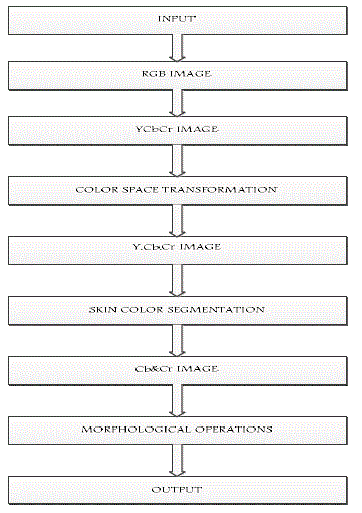 |
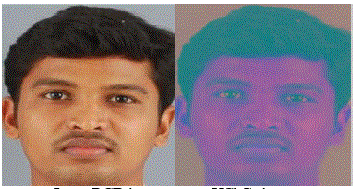 |
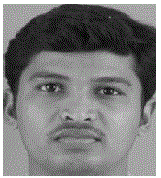 |
 |
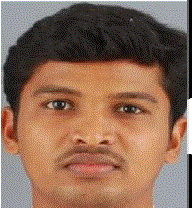 |
| Figure 1 |
Figure 2 |
Figure 3 |
Figure 4 |
Figure 5 |
|
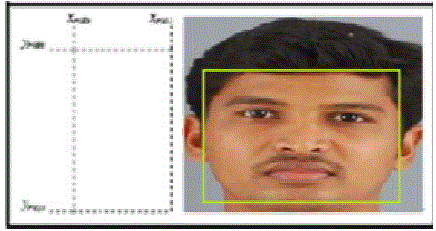 |
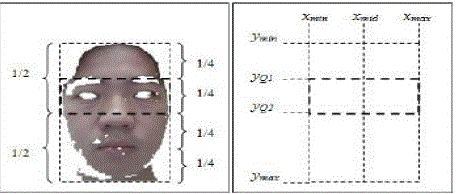 |
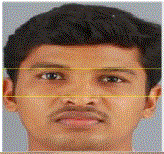 |
 |
 |
| Figure 6 |
Figure 7 |
Figure 8 |
Figure 9 |
Figure 10 |
|
| |
References
|
- Yuchi Huang, Qingshan Liu and Dimitris N. Metaxas,” A Component-Based Framework for Generalized Face Alignment” IEEE Transactionson Systems, Man and Cybernetics-Part B: Cybernetics, Vol. 41, No. 1, February 2011.
- R.C. Coetzer and G.P. Hancke,” Eye detection for a Real-time Vehicle Driver Fatigue Monitoring system” IEEE Intelligent VehiclesSymposium (IV)Baden-Baden, Germany, June 5-9, 2011.
- Ji Hyun Yang, Zhi-Hong Mao, Louis Tijerina, Tom Pilutti, Joseph F. Coughlin and Eric Feron,” Detection of Driver Fatigue Caused by SleepDeprivation” IEEE Transactions on Systems, Man and Cybernetics-Part A: Systems and Humans, Vol. 39, No. 4, July 2009.
- Ali Atharifard, and sedighehGhofrani, “Robust Component-based Face Detection Using Color Features” IEEE Transaction on Pattern Analysisand Machine Intelligence, vol. 24, no. 1, 2002.
- David B.L Bong, KokHoui Lim “Application of Fixed-Radius Hough Transform in Eye Detection” International Journal of IntelligentInformation Technology Application, 2009, 2(3).121-127.
- R. L. Hsu, M. Abdel-Mottaleb, and A. K. Jain, "Face detection in color images," IEEE Transaction on Pattern Analysis and MachineIntelligence, vol. 24, no. 5, pp. 696–706, May 2002.
- M. H. Yang, D. J. Kriegman, and N. Ahuja, "Detecting faces in images: a survey," IEEE Transaction on Pattern Analysis and MachineIntelligence, vol. 24, no. 1, pp. 34-58, 2002.
- Cui Xu, Ying Zheng and Zengfu Wang, “Efficient Eye States Detection in Real-Time for Drowsy Driving Monitoring System” Proceedings ofthe 2008 IEEE International Conference on Information and Automation June 20 -23, 2008.
- RajatGarg, Vikrant Gupta and VineetAgrawal,” A Drowsy Driver Detection and security System” IEEE International Conference onIntelligent Vehicles system Vol.34, 2009.
- P. Viola, and M. Jones, "Robust real-time face detection," Internet J. Computer Vision, vol. 57, no. 2, pp. 137-154, 2004.
- S. L. Phung, A. Bouzerdoum, and D. Chai, " Skin Segmentation Using Color Pixel Classification: Analysis and Comparison," IEEETransaction on Oattern Analysis and Machine Intelligence, vol. 27, no.1, pp.148-154, 2005.
- Hyun-Chul Do, Ju-Yeon You and Sung-Il Chien,” Skin Color Detection through Estimation and Conversion of Illuminant Color Under VariousIlluminations” IEEE International Conference on Vehicle Intelligent and Information systems Vol.43,No.2,June 2007.
- ShabnamAbtahi, Behnoosh Hariri and ShervinShirmohammodi,” Driver Drowsiness Monitoring based on Yawning Detection”, FifthInternational conference on Intelligent vehicles and Information Systems, Vol.11, No.2, 2011.
- Kai Song, FengjuShen,Zhenhuan Liu and Zhikun Liu,” Eye detection and recognition in the fatigue warning system” Third InternationalConference on Intelligent Networks and Intelligent Systems,Vol. 35,No.2,2010.
- Danghui Liu, Peng Sun, YanQing Xiao and Yunxia Yin,” Drowsiness Detection Based on Eyelid Movement” Second International Workshopon Education Technology and Computer Science, Vol.10, No.1, 2010.
- Fabian Friedrichs and Bin Yang,” Camera-based Drowsiness Reference for Driver State Classification under Real Driving Conditions” IEEEIntelligent Vehicles Symposium, Vol.10, No.2, June 21-24, 2010.
- H Wang, L. B. Zhou and Y Ying,” A Novel Approach for Real Time Eye State Detection in Fatigue Awareness System” IEEE IntelligentVehicles Symposium, Vol.23, No.4,2010.
|